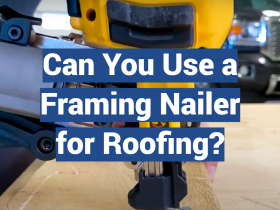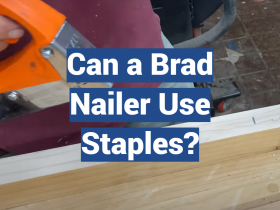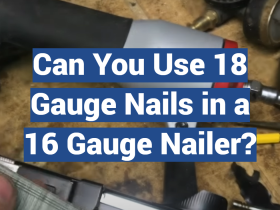The hand-held palm nailer is designed for driving single construction nails. It is an indispensable tool in the construction and repair industry that allows you to work in such hard-to-reach places where a regular hammer is useless. The main structural components of the manual nailer are the compact body and the piston, which is moved by compressed air.
The principle of work
The connected compressor pumps air into the receiver, from where it flows through the hose into the hand-held nailer, where it is held back by a special valve. During use compressed air enters the cover, and the pressure of the airflow forces the piston to move forward. The piston returns to its original position, after which the operation is repeated.
Purpose and application
Due to its compactness, the manual pneumatic hammer easily copes with hard-to-reach places, which makes it indispensable in construction, including when driving connector nails into a corner. The magnet, which is located inside the case, allows you to fix and hold the nail. Suitable for nails with head diameters up to 8.8 mm and lengths from 20 mm to 120 mm.
Which nailer to choose: electric or pneumatic?
Currently, in the construction of wooden buildings, in the industry, in the assembly of wooden containers, and the manufacture of furniture, they began to use a specialized tool called a nailer. What is a nailer? It is a device designed for the automatic hammering of nails. Instead of nails, metal studs and pins of various sizes and thicknesses can be used.
Main types
Let’s consider the main types and functions of nailers. Many people immediately have a question, why they must use a nailer when you can use a hammer. Here it is clear, the driving speed is much higher, the person will still get tired sooner or later, and most importantly, a nail hammered the first time can withstand more load by 1.5-2 times. Nailers are divided into two large groups: by the type of drive, and by type of consumables.
Pneumatic nailers are compressed air devices. You need a compressor to create compressed air. Usually, manufacturers write in the instructions how much the receiver is required and the working pressure, usually, this is the limit from 6 to 8 bar. But some manufacturers produce high-pressure air nailers with an operating pressure of 20 to 30 bar. This tool is widely used in both construction and manufacturing.
It has several advantages:
- High clogging speed, on average 3 rounds per minute
- The ability to work in different conditions, even high humidity and rain, which makes it possible to use them when installing the roof
- Low recoil
- Almost noiselessness
- Compact dimensions with an average weight of about 2-3 kg, which allows one-handed operations
- Low cost
- Simplicity of design
- Low-cost maintenance
All disadvantages are associated with the use of compressed air, that is, the use of electricity for the compressor, the use of high-pressure hoses, which adds some inconveniences.
An application range for pneumatic nailers is versatile. It can be used both for finishing with small studs and large diameter nails (4-5 mm) and up to 220 mm long, for fastening and assembling the frames.
Gas nailers use flammable gas as a working medium. The detonation system is simple. The mixture of gas and air is mixed with the help of a built-in fan, and the ignition occurs due to the spark of a candle. As a result of such a reaction, a microexplosion occurs, the energy is absorbed by the piston and transferred further to the working element (nail). The gas nailer belongs to the class of mobile devices. The power consumption of the entire device is from the standard battery.
The pros:
- Mobility and autonomy
- Great impact force
- Versatility as there are modifications that can be used as a drill and hammer drill
- Weight 3-4 kg
The cons:
- High cost
- Large tool dimensions
- Harmful exhaust gases
- Additional costs for a gas cylinder, increasing the price of a shot
Electric nailers are used for finishing. They work with consumables of small lengths (pins and nails up to 60 mm.). Electric devices can be powered by an electrical outlet and rechargeable – which operate from a rechargeable battery.
The advantages:
- Small dimensions from network representatives
- Mobility and autonomy for battery representatives
- Silence
- No exhaust fumes
- Small weight up to 3 kg
The disadvantages include:
- High cost despite its characteristics
- There are restrictions on the size of the consumable
- Do not work in rooms with high humidity
- The number of shots is 1 per second
The second group is classified by the type of consumables:
- with nails
- with staples
Here everything is clear from the names. The consumables are fed into the gun, not in bulk, but neatly folded and packed in clips or spools. In these clips, cardboard, plastic, metal wires are used as connecting elements between the nails. They can hold up to 300 pieces. Nailers have a limit on the length of the consumable for each model. Usually, these ranges are 34-66 mm., 50-90 mm., 90-120 mm., 100-160 mm.
Recommended purposes of the nailers
Manufacturers have taken the path that the nailer must perform a certain type of work. This is precisely the reason for the limitations on the size of the consumables. But, like any rule, there are exceptions, some models of units can solve a huge range of any tasks, and this happens due to the use of different nozzles and adapters.
- Roofing nailers. They are used for fastening a soft roof. As fasteners, brushed nails with a large head(about 8-10 mm) and long nails (about 25-50 mm).
- Finishing nailers. They are used for fastening cladding (molding, platbands, plinths). Thin nails without heads are used as fasteners. The most important thing is that there is an adjustment of the driving depth, as well as the tip, which is made of rubber, so as not to leave scratches on the surface.
- Frame nailers. They are widely used with large nails up to 220 mm. Used for the construction of wooden structures, pallets, floors, rafters. The nail heads can be O-shaped and D-shaped.
- Brad nailers. These tools are generally used to replace your hammer, particularly in very tough places.
- Palm nailers. They are great for light trimming, flooring, and molding. They can easily replace your hammer in the corners or areas, which are difficult to reach.
Practical tips on how to use a palm nailer
Get ready before you start to work. Use any protection for your ears, as the tool is noisy despite its small size, especially if you have a device with a compressor.
Put your hand into the strap and tighten it well. A firm hold will withstand all the working vibrations.
Position the nail, which you are going to affix. Press with your hand or just use the button on the back. You can use the tool upside down as well to drive the nail into the ceiling, for example.
Do the job. With pressure drive the nail and feel the resistance – up and down movement when the nail is being pushed into the wood. It will take about ten pumps.
Conclusion
As you can see, there are a lot of nuances in the choice of nailers. One of the most important selection parameters is consumables, also consider the stability and quality of delivery. Two accumulators have to be provided, for the electric nailer and of course a quick charge. If you take a responsible approach to the choice of nailing equipment, then it will delight you for more than one year.




Leave a Reply